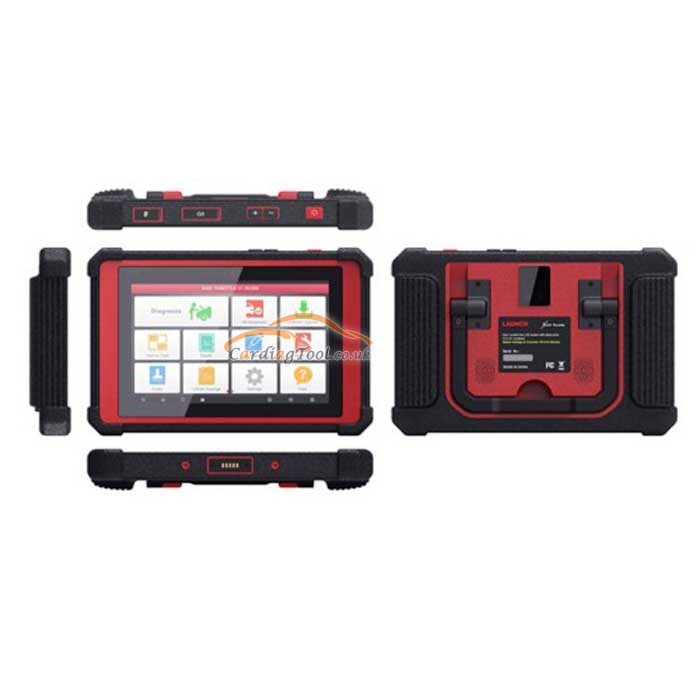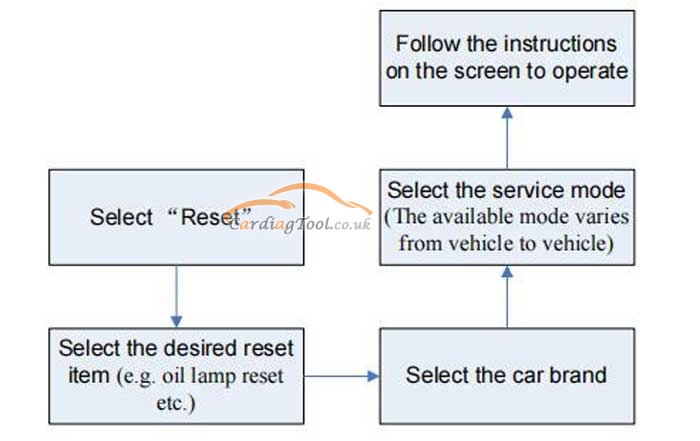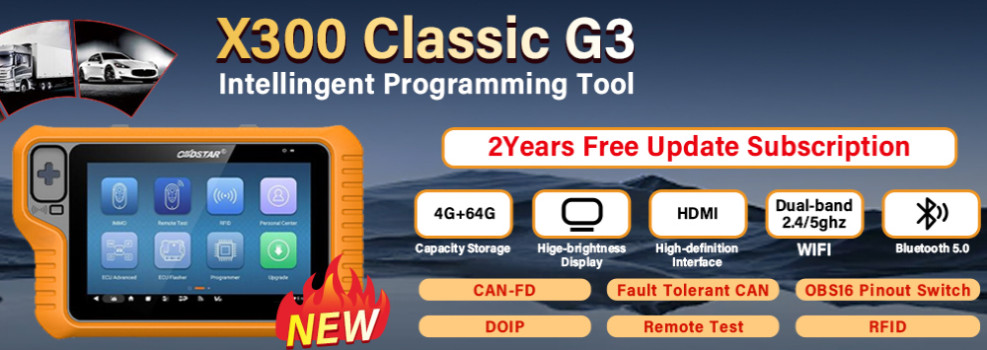X-431 PAD V is Launch’s latest top-end car comprehensive diagnostic scan tool based on the Android 7.1 system. It inherits Launch’s many advantages in car fault diagnostic technologies, including large car model coverage, powerful functions, a large number of special functions, and accurate test data.

Get the focus for today’s updated article: share with the customers of All Maintenance Reset Special Functions Instruction of Launch X431 PAD V.
Before the instruction, let’s look at the highlights of PAD V to firstly grasp its outstanding performance and features.
1.Global Version, No IP Limited
2.Multi-languages: English, Italian, German, French, Spanish, Portuguese, Polish, Dutch, Greek, Danish, Hungarian, Swedish, Finnish, Romanian, Czech, Russian, Japanese, Korean, Serbian, Persian, Turkish, Arabic, Chinese
3. Two Years Free Update Online, after two years, the update fee is 399USD per year.
4. Android 7.1 customized system, Qualcomm 8-core processor, 10.1 inch capacitive touch screen, support QC3.0 fast charging.
5. 2.4GHz&5GHz Dual-Frequency Wi-Fi, the transmission rate is faster than the previous generation.
6. Support commercial vehicle and passenger car diagnose, Support J2534, CAN FD, DoIP.
7. Wide mode coverage, powerful and a large number, of diagnostic functions, and accurate test data.
8. Brand new industrial design, with soft rubber sheath on the four corners of the product, to effectively prevent collision; damping shaft, free adjustment of nearly 180 degrees; support three modes of hanging, support and normal.
Awesome! Now, please come and get what you want to know about the PAD V all maintenance reset special functions instruction.
In addition to amazing & powerful diagnostic function, X-431 PAD V also features various service functions. The most commonly performed service functions contain:
(1)Oil Reset Service
(2)Electronic Parking Brake Reset
(3)Steering Angle Calibration
(4)ABS Bleeding
(5)TPMS (Tire Pressure Monitor System) Reset
(6)Gear Learning
(7)IMMO Service
(8)Injector Coding
(9)Battery Maintenance System
(10)Diesel Particulate Filter (DPF) Regeneration
(11)Electronic Throttle Position Reset
(12)Gearbox Matching
(13)AFS (Adaptive Front-lighting System) Reset
(14)Sunroof Initialization
(15)Suspension Calibration
There are two methods to reset service lamp: Manual reset or Auto reset. Auto reset follows the principle of sending command from the tool to vehicle’s ECU to do resetting. While using manual reset, users just follow the on-screen instructions to select appropriate execution options, enter correct data or values, and perform necessary actions, the system will guide you through the complete performance for various service operations.

(1)Oil Reset Service
This function allows you to perform reset for the engine oil life system, which calculates an optimal oil life change interval depending on the vehicle driving conditions and climate.
This function can be performed in the following cases:
- If the service lamp is on, you must provide service for the car. After service, you need to reset the driving mileage or driving time so that the service lamp turns off and the system enables the new service cycle.
- After changing engine oil or electric appliances that monitor oil life, you need to reset the service lamp.
(2)Electronic Parking Brake Reset
- If the brake pad wears the brake pad sense line, the brake pad sense line sends a signal sense line to the on-board computer to replace the brake pad. After replacing the brake pad, you must reset the brake pad. Otherwise, the car alarms.
- Reset must be performed in the following cases:
- a) The brake pad and brake pad wear sensor are replaced.
- b) The brake pad indicator lamp is on.
- c) The brake pad sensor circuit is short, which is recovered.
- d) The servo motor is replaced.
(3)Steering Angle Calibration
To reset the steering angle, first find the relative zero point position for the car to drive in straight line. Taking this position as reference, the ECU can calculate the accurate angle for left and right steering.
After replacing the steering angle position sensor, replacing steering mechanical parts (such as steering gearbox, steering column, end tie rod, steering knuckle), performing four-wheel alignment, or recovering car body, you must reset the steering angle.
(4)ABS Bleeding
This function allows you to perform various bi-directional tests to check the operating conditions of Anti-lock Braking System (ABS).
- When the ABS contains air, the ABS bleeding function must be performed to bleed the brake system to restore ABS brake sensitivity.
- If the ABS computer, ABS pump, brake master cylinder, brake cylinder, brake line, or brake fluid is replaced, the ABS bleeding function must be performed to bleed the ABS.
(5)Tire Pressure Monitor System Reset
This function allows you to quickly look up the tire sensor IDs from the vehicle’s ECU, as well as to perform TPMS replacement and sensor test.
- After the tire pressure MIL turns on and maintenance is performed, the tire pressure resetting function must be performed to reset tire pressure and turn off the tire pressure MIL.
- Tire pressure resetting must be performed after maintenance is performed in the following cases: tire pressure is too low, tire leaks, tire pressure monitoring device is replaced or installed, tire is replaced, tire pressure sensor is damaged, and tire is replaced for the car with tire pressure monitoring function.
(6)Gear Learning
The crankshaft position sensor learns crankshaft tooth machining tolerance and saves to the computer to more accurately diagnose engine misfires. If tooth learning is not performed for a car equipped with Delphi engine, the MIL turns on after the engine is started. The diagnostic device detects the DTC P1336 ‘tooth not learned’. In this case, you must use the diagnostic device to perform tooth learning for the car. After tooth learning is successful, the MIL turns off. the engine ECU, crankshaft position sensor, or crankshaft flywheel is replaced, or the DTC ‘tooth not learned’ is present, tooth learning must be performed.
(7)IMMO Service
An immobilizer is an anti-theft mechanism that prevents a vehicle’s engine from starting unless the correct ignition key or other device is present. Most new vehicles have an immobilizer as standard equipment. An important advantage of this system is that it doesn’t require the car owner to activate it since it operates automatically. An immobilizer is considered as providing much more effective anti-theft protection than an audible alarm alone.
As an anti-theft device, an immobilizer disables one of the systems needed to start a car’s engine, usually the ignition or the fuel supply. This is accomplished by radio frequency identification between a transponder in the ignition key and a device called a radio frequency reader in the steering column. When the key is placed in the ignition, the transponder sends a signal with a unique identification code to the reader, which relays it to a receiver in the vehicle’s computer control module. If the code is correct, the computer allows the fuel supply and ignition systems to operate and start the car. If the code is incorrect or absent, the computer disables the system, and the car will be unable to start until the correct key is placed in the ignition.
To prevent the car being used by unauthorized keys, the anti-theft key matching function must be performed so that the immobilizer control system on the car identifies and authorizes remote control keys to normally use the car. When the ignition switch key, ignition switch, combined instrument panel, ECU, BCM, or remote control battery is replaced, anti-theft key matching must be performed.
(8)Injector Coding
Write injector actual code or rewrite code in the ECU to the injector code of the corresponding cylinder so as to more accurately control or correct cylinder injection quantity.
After the ECU or injector is replaced, injector code of each cylinder must be confirmed or re-coded so that the cylinder can better identify injectors to accurately control fuel injection.
(9) Battery Maintenance System Reset
This function enables you to perform a resetting operation on the monitoring unit of vehicle battery, in which the original low battery fault information will be cleared and battery matching will be done.
Battery matching must be performed in the following cases:
- a) Main battery is replaced. Battery matching must be performed to clear original low battery information and prevent the related control module from detecting false information. If the related control module detects false information, it will invalidate some electric auxiliary functions, such as automatic start & stop function, sunroof without one-key trigger function, power window without automatic function.
- b) Battery monitoring sensor. Battery matching is performed to re-match the control module and motoring sensor to detect battery power usage more accurately, which can avoid an error message displaying on the instrument panel.
(10)Diesel Particulate Filter (DPF) Regeneration
DPF regeneration is used to clear PM (Particulate Matter) from the DPF filter through continuous combustion oxidation mode (such as high temperature heating combustion, fuel additive or catalyst reduce PM ignition combustion) to stabilize the filter performance.
DPF regeneration may be performed in the following cases:
- a) The exhaust back pressure sensor is replaced.
- b) The PM trap is removed or replaced.
- c) The fuel additive nozzle is removed or replaced.
- d) The catalytic oxidizer is removed or replaced.
- e) The DPF regeneration MIL is on and maintenance is performed.
- f) The DPF regeneration control module is replaced.
(11)Electronic Throttle Position Reset
This function enables you to make initial settings to throttle actuators
and returns the “learned” values stored on ECU to the default state.
Doing so can accurately control the actions of regulating throttle (or
idle engine) to adjust the amount of air intake.
(12)Gearbox Matching
- This function can complete the gearbox self-learning to improve gear shifting quality.
- When the gearbox is disassembled or repaired (after some of the car battery is powered off), it will lead to shift delay or impact problem. In this case, this function needs to be done so that the gearbox can automatically compensate according to the driving conditions so as to achieve more comfortable and better shift quality.
(13)AFS (Adaptive Front-lighting System) Reset
This feature is used to initialize the adaptive headlamp system. According to the ambient light intensity, the adaptive headlamp system may decide whether to automatically turn on the headlamps, and timely adjust the headlamp lighting angle while monitoring the vehicle speed and body posture.
(14)Sunroof Initialization
This function can set the sunroof lock off, closed when it rains, sliding / tilting sunroof memory function, temperature threshold outside the car etc.
(15)Suspension Calibration
- This function can adjust the height of the body.
- When replacing the body height sensor in the air suspension system, or control module or when the vehicle level is incorrect, you need to perform this function to adjust the body height sensor for level calibration.
That’s all. Thank you for sharing your time with us!
Don’t forget to contact us at:
Email: sales@CarDiagTool.co.uk
Skype: cardiag.co.uk
Whatsapp: +86 15002705698
Or leave a message at https://www.cardiagtool.co.uk/
to tell us what suggestions or questions you have about our products.


